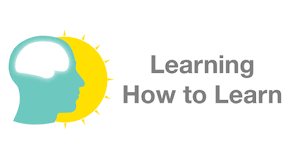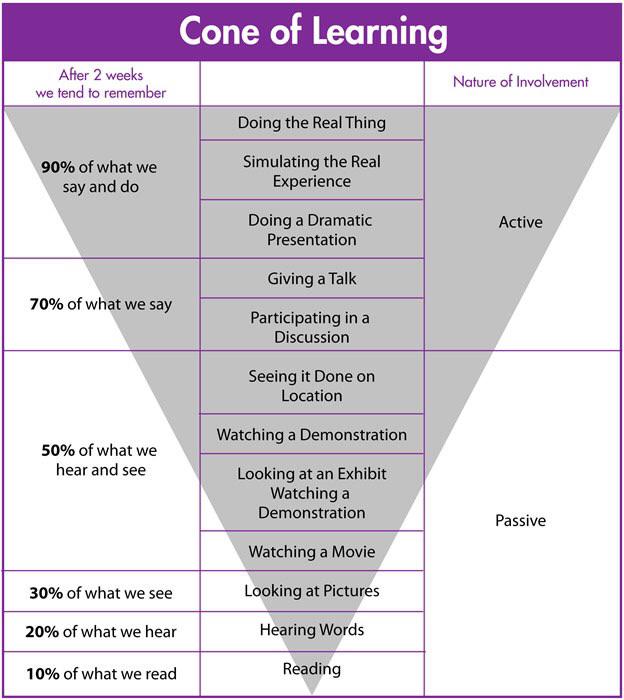Learning: tips
Basics on how to learn
1 Four strategies to effective and permanent learning
1.1 Not getting notes is bad
Take notes with pen and paper and have effective note-taking skills
1.2 Put your soul, now
Speak, debate, create emotions, remember, memorize. Engage the learning, show it is important for you
1.3 Confusion is good
Embrace discomfort to make connections: study some topics at once upon a distributed practice (use the time space among stages) with minor changes everytime
1.4 Teach is best
Teach what you learn to others. Do it, now.
2 Cone of learning
3 Jim Kwik: learn anything faster
To learn anything faster, just remember FAST
3.1 The F in Fast stands for Forget
- If you want to speed up ‘kwik brain,’ you must temporarily forget three things.
- Forget what you already know about the subject. A lot of people don’t learn faster because they feel like they already know the information. But your mind is like a parachute—it only works when it’s open.
- Forget about anything that’s not urgent and important. You can’t multitask. If your brain is thinking about 4 different things, you’re not fully present and you won’t learn ’kwik’ly.
- Forget your limitations. These are beliefs like your memory isn’t good, or you’re a slow reader, or you don’t have the right education to learn. But if you fight for your limitations, you get to keep them. Your memory isn’t fixed, and it is possible to remember hundreds of words and numbers the way I do onstage.
3.2 The A in FAST stands for Active
- In school, we were taught to learn by consuming information quietly. But you don’t learn by being lectured to. You learn by creating information and being active in the process.
- Learning is NOT a spectator sport.
- How can you be more active in your learning?
- Ask questions.
- Take notes.
- The more active you are, the more you will learn.
3.3 The S in FAST stands for State
- Your state is a snapshot of your mood – the mood of your mind and your body. It’s the emotional well-being that you feel in that exact moment.
- Information combined with emotion becomes a long-term memory.
- Many of us don’t remember what we learned in school because the umbrella emotion for most people in school was boredom.
- You are the only person in control of your state.
- How can you improve your state?
- Change your posture or your body or breathing.
- Sit or stand the way you would if you were totally energized.
- Think about how you’ll benefit from the information.
- All learning is state-dependent. Choose states of joy, fascination, and curiosity.
- Sell your cleverness for bewilderment – Rumi.
3.4 The T in FAST stands for Teach
- If you want to cut your learning curve in half, learn with the intention of teaching it to somebody else.
- If you had to give a presentation on what you’re learning today, you would learn it differently. You would pay closer attention. You would take more detailed notes. You would ask better questions.
- When I teach something, I get to learn it twice.
- People often say that those who can’t do teach. But I never saw that as a negative. I always thought, wow, if I can’t do something, I can teach it, and then I can do it.
4 References: Learning How to Learn
This course gives you easy access to the invaluable learning techniques used by experts in art, music, literature, math, science, sports, and many other disciplines.
We’ll learn about how the brain uses two very different learning modes and how it encapsulates chunks information.
We’ll also cover illusions of learning, memory techniques, dealing with procrastination, and best practices shown by research to be most effective in helping you master tough subjects.
- Learning How to Learn: Powerful mental tools to help you master tough subjects: Learning How to Learn

